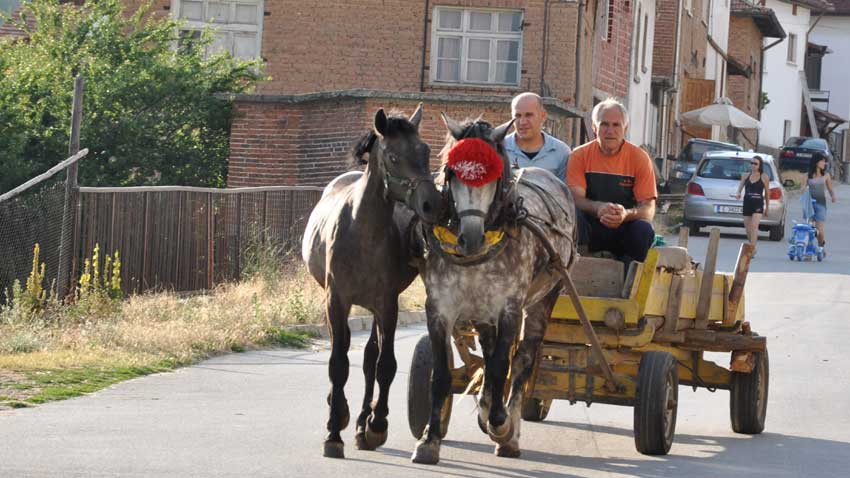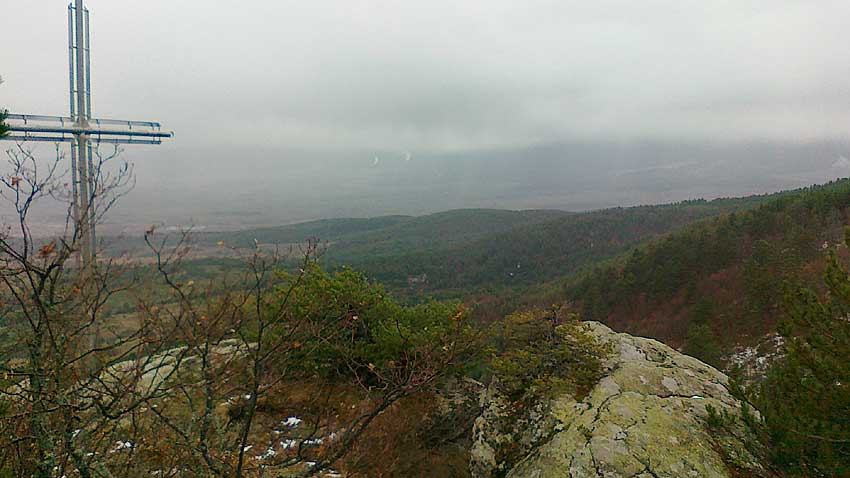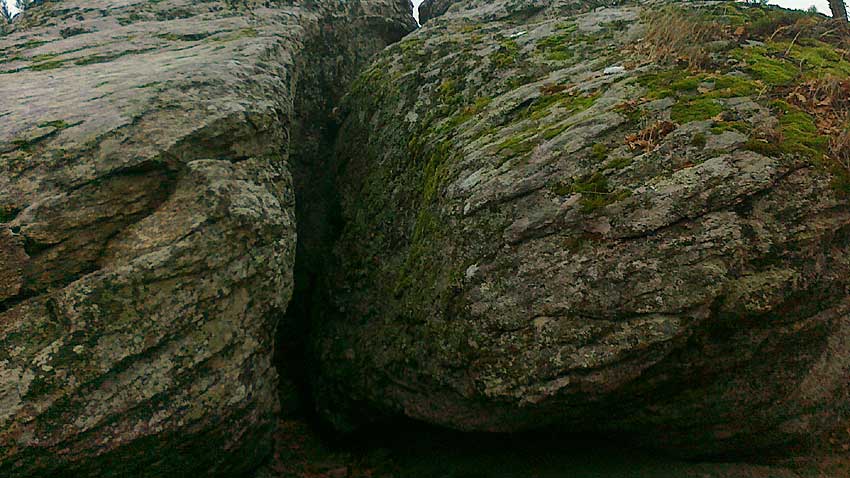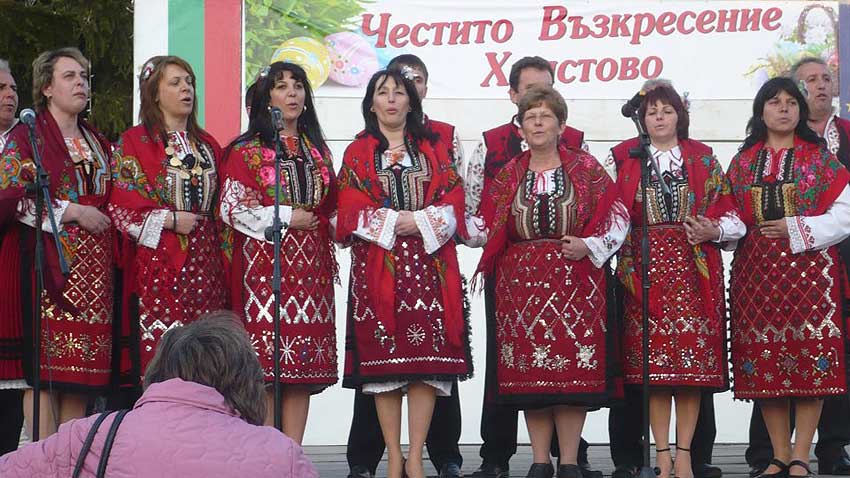Traveling from Sofia in a southeastern direction, towards Razlog Valley, you will reach Bachevo. Many are the stories of how the village came into being local people tell the young. Some of the local legends and customs are recorded in a book, as yet unpublished, by Maria Paskalska, long-time secretary of the local community culture club.
Bachevo lies at the foot of Mount Rila and the view it commands of the three mountains – Rila, Pirin and the Rhodopes is truly stunning. Perivol – an old Persian word meaning “beautiful view” is what the surrounding locality is called. According to one legend, the village derives its name from a story about brothers who scattered across the valley, though some remained in what is today Bachevo. Another legend has it that the name is connected with the once numerous flocks of sheep bred here and the processing of their milk – this ancient occupation was once called bachia, meaning dairy farm.
 What is life like in this Bulgarian village – here is Mayor Sonya Koulincheva with the answer:
What is life like in this Bulgarian village – here is Mayor Sonya Koulincheva with the answer:
“The village currently has a population of 1,700 and what is hope-inspiring is that people are not moving away and we have many young people here. Bachevo has a school and a kindergarten. People here mostly hold jobs in Razlog and in Bansko, but prefer to live in the village. Bachevo is only 4 kilometers from Razlog and 10 from the ski resort of Bansko, there are good asphalt roads, so traveling is no problem.”
Bachevo is well-known for its beautiful landscapes but also for its curative mineral spring. The water temperature here is 26 degrees C., and it is considered to be one of the three springs in Bulgaria with the most potent healing capacity, locals say. But there is one other thing: there is one animal that is held in high esteem in Bachevo – the horse. “Besides the breath-taking landscapes, tourists coming here can also make use of the horse riding facilities,” Mayor Koulincheva says.

“It is no coincidence that Bachevo’s coat of arms features a horse,” she says. “Visitors coming here can choose between three horse riding schools in the village; two of them were set up with funding under European projects. They now have accommodation for tourists who can go horse riding or see the countryside from a horse-drawn carriage. So we have a good tourist potential.”
Nevertheless, the wave of emigration has not passed Bachevo up. Some of its younger inhabitants have found work in Great Britain, France or Spain. “But they invariably come back here in summer to enjoy the beautiful surroundings,” Sonya Koulincheva says. The allure of this Bulgarian village is the reason why several families from Great Britain and Russia have bought houses and have settled here. Few people know, however, that Bachevo has one more natural landmark – the rock of St. George. “If you think you have no sins, all you have to do to verify this is to go to this rock that is cleaved in half.

There is a legend about that as well”, says Mayor Koulincheva and adds:
“According to this legend St. George once lived here among our fellow villagers. When the Ottoman invasion began, the Turks said to themselves that the only way they could subdue the people in the village and force them to convert to Islam was by killing St. George. So, with a pursuit party on his heels, St. George fled on horseback and reached the rock. Down below was the precipice and behind – the Turkish posse. But suddenly, God gave him wings, the horse flew over the precipice and landed at the foot of the rock; where his hooves touched the ground a mineral spring sprang and the rock was cleaved in two. To this day people climb up to the rock to squeeze through the cleavage. If you are a sinner you will be left trapped, if you are free of sin the rock will let you pass.”
 Past and present intertwined, life in Bachevo goes on. “In one’s thoughts there are no limits,” says Maria Paskalska, secretary of the village’s culture community club, the spark of the burning spirit here. The club also helps people have a good time during holidays when the men’s and women’s folklore groups bring villagers together. To pass their skills and traditions down to the younger generation it organizes different groups like “Granny’s knitting” or the group for making folk-style dolls with the national costumes typical of this part of the country. Maria Paskalska herself has collected folk songs, proverbs, sayings, legends and everything connected with the history and the life of the people of Bachevo. And that includes the cuisine typical of these parts. One local recipe is for string beans which are dried in the sun. And in winter there is a popular recipe using dried beans, to which sudjuk is added in the pot – which is a raw meat product, very similar to the Bulgarian lukanka, as well as blood sausage – the Bulgarian version being with several kinds of meat – and pig feet.
Past and present intertwined, life in Bachevo goes on. “In one’s thoughts there are no limits,” says Maria Paskalska, secretary of the village’s culture community club, the spark of the burning spirit here. The club also helps people have a good time during holidays when the men’s and women’s folklore groups bring villagers together. To pass their skills and traditions down to the younger generation it organizes different groups like “Granny’s knitting” or the group for making folk-style dolls with the national costumes typical of this part of the country. Maria Paskalska herself has collected folk songs, proverbs, sayings, legends and everything connected with the history and the life of the people of Bachevo. And that includes the cuisine typical of these parts. One local recipe is for string beans which are dried in the sun. And in winter there is a popular recipe using dried beans, to which sudjuk is added in the pot – which is a raw meat product, very similar to the Bulgarian lukanka, as well as blood sausage – the Bulgarian version being with several kinds of meat – and pig feet.
English version: Milena Daynova
Today we mark the 105th anniversary of the birth of academician Valeri Petrov - poet, novelist, screenwriter, playwright and translator. Born in Sofia on 22 April 1920 under the name of Valeri Nissim Mevorakh, he graduated in medicine from Sofia..
President Rumen Radev's "Support a Dream" charity initiative has attracted the support of musicians, stylists, designers and donors, the head of state's press secretariat said. A prom hosted by the president each spring brings together high school..
The Speaker of the National Assembly Natalia Kiselova will today award the winners of the 32nd Children's Easter Festival in the Serbian town of Bosilegrad. The children will compete in three categories – for the strongest, most beautiful and most..
The third edition of the Samardala Festival will be held on 3 May in the central square of Nova Zagora. The aromatic plant, characteristic of..
For the ninth year in a row, the Bulgarian Society for the Protection of Birds is organising the Let’s Count the Sparrows campaign . It takes place..
Dozens of enthusiasts and nature lovers will kick off the 44th edition of the Move and Win campaign with a spring hike to Bozhur Hut. The first walk will..

+359 2 9336 661
